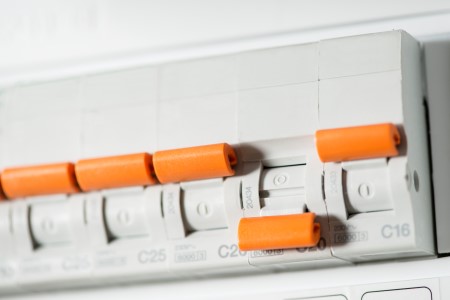Let's Clear Up The Con-Fuse-Ion

Every Paris home has an electrical switchboard. It protects the electrical wiring system in your home. As part of your home maintenance checks or when you are doing your next renovations, have a look inside your switchboard. This is where the main power switch, along with a number of fuses or circuit breakers are located. Each fuse or circuit breaker connects to a different area of wiring in your Paris home. If an electrical fault occurs, the fuse will blow or the circuit breaker will trip, cutting off the power preventing overloading or household fire. A circuit breaker can be switched back on, whereas once a fuse blows it must be replaced with a new one.
Always turn off the main power switch if you are changing a fuse as well as turning off all electrical appliances and light switches that are connected to the blown fuse. Replace the fuse with the correct current rating. Too high a current rating will cause excessive current to flow through the circuit. Overheating and possibly fire can occur.
If a fuse keeps blowing, get hold of your professional Paris electrician. There may be hidden electrical problems that you won’t have picked up. If possible, swap the fuses in your switchboard with plug-in circuit breakers of the same rating, as these are safer to use and do not require replacing.
Find out what electrical switches and appliances the fuse or circuit breaker protects. Switchboards are normally labeled for easy identification. If not, ask a Paris electrician to do this for you. This can save you time in identifying a blown fuse or which circuit breaker to switch off.
How To Replace A Fuse
Follow these steps:
1. Turn off the main power switch at the switchboard.
2. Look inside the switchboard for a list of where each circuits and each fuse connects to.
3. If it is not obvious which fuse has blown, inspect each fuse one at a time.
4. Once you have found the blown fuse, switch off lights and unplug all appliances on that circuit.
Replace the fuse wire. Make sure you use the correct current rating fuse wire. The current rating is generally indicated on the front of the fuse carrier.
- Lighting circuits typically use 5 amp, but not greater than 10 amp fuse wire.
- Socket outlets use 10 amp but not greater than 15 amp fuse wire.
- Large appliances use a larger size fuse.
- Make sure to cut off any excess fuse wire.
5. Place the fuse back in its slot and turn back on the main power switch.
6. If the fuse blows again, call a licensed Paris electrician.
What To Do If A Circuit Breaker Trips?
If your power goes off because your circuit breaker has tripped follow these steps:
1. Switch off lights and unplug all appliances on the faulty circuit.
2. Push the operating lever to the “on” position, or push in the button on the circuit breaker.
3. If the circuit breaker continues to trip, it is time to contact your licensed Paris electricians.